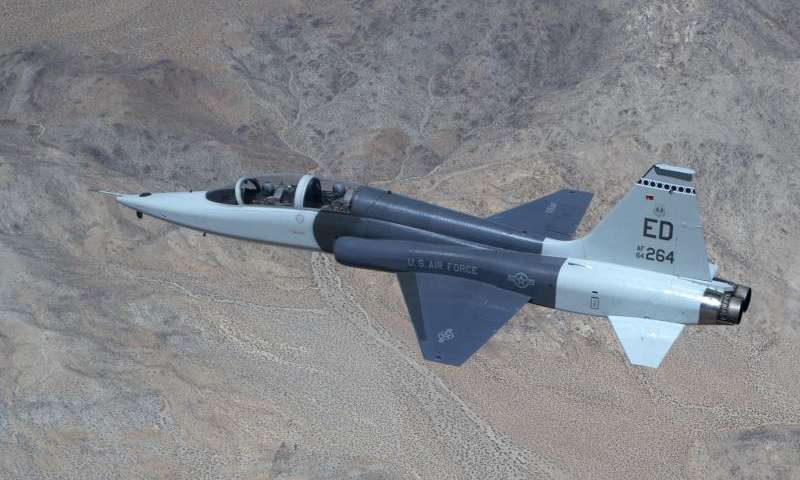NASA has taken a Beechcraft B200 King Air, installed two state-of-the-art high speed cameras on it, and utilized a modern version of a 150-year-old German photography technique to capture and study the shock waves produced by supersonic jets in flight. The ultimate goal is to develop a method to quiet supersonic transport.
The research has taken place at NASA’s Armstrong Flight Research Center at Edwards Air Force Base and Ames Research Center at Moffett Field. Scientists worked to capture the jets waves using schileren imagery, a technique invented by German physicist August Toepler in 1864. The imaging reveals shock waves due to air density gradient and the accompanying change in refractive index.
In the tests, a camera mounted to the underside of a NASA Beechcraft B200 King Air captures 109 frames per second while the supersonic target aircraft passes sever thousand feet underneath in straight-and-level flight at speeds up to Mach 1.09 (with Mach 1 being the speed of sound, about 768 mph at sea level).
“Air-to-air schlieren is an important flight-test technique for locating and characterizing, with high spatial resolution, shock waves emanating from supersonic vehicles,” said Dan Banks, Armstrong’s principal investigator on the project. “It allows us to see the shock wave geometry in the real atmosphere as the target aircraft flies through temperature and humidity gradients that cannot be duplicated in wind tunnels.”
The King Air’s cameras did an excellent job; the team was able to capture and successfully process images during the first test (dubbed AirBOS) out in April 2011. As an added bonus, the images showed not only shock waves but also density changes including vortices and engine plume effects.

Researchers have continued to refine and improve the technique. The King Air B200 has captured both NASA F-18 and F-15 aircraft waves and the waves of a T-38C in the most recent test which took place in February 2015. Synchronizing flight paths of a supersonic aircraft and a subsonic King Air require complex navigational system integration to insure proper positing. The T-38 had to fly directly underneath the King Air.
“These passes posed a unique safety and technical challenge due to the small window of time during which the camera could view the target aircraft,” said Maj. Jeremy Vanderhal, one of the T-38C test pilots.
Current regulation prohibits flight that would produce a sonic boom over populated areas. This is a major barrier to future supersonic civil aviation. The dream outcome of the project would be the development of tools and concepts that reign in the impact of sonic boom noise for overland flights.

Information source: NASA article at http://phys.org/news/2015-08-schlieren-images-reveal-supersonic.html#jCp


